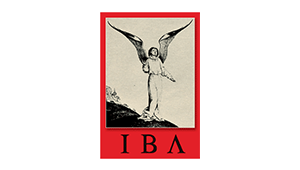Lament
Lamentations
Ländler
Larghetto
Largo
Legato
Leggero (Leggiero)
Legno
Leitmotif
Lento
Libretto
Lied
Lieto fine
Loure
Lute
Lyre
Lyric soprano
Lyric tenor
(see ‘Gigue’)
The jota is a traditional Spanish dance, transmuted into an orchestral composition by the Russian composer Glinka in his Jota aragonesa.
Chapel (= German: Kapelle; Italian: cappella; French: chapelle) is a musical establishment, generally of a king, prince or other ruler.
The Kapellmeister is the director of music (= Italian: maestro di cappella; French: maître de chapelle) within a musical establishment, either of a king or prince, or of an opera-house or municipality. The term Kapellmeistermusik has a pejorative implication, suggesting music that is correct but uninspired, a criticism widely if inaccurately applied to a number of 19th-century composers now subject to re-evaluation.
Keys on a musical instrument are the levers which when depressed produce a particular pitch of note. The word may be applied to keyboard instruments such as the piano, the organ and the harpsichord, or to the metal keys on woodwind instruments such as the flute, oboe, clarinet and bassoon.
The key in which a piece of music is written indicates the scale used and the key-note or home-note, on the chord of which it must end. Not all music is in a key, since attempts have been made in the 20th century to extend music beyond the supposed limitations of key or tonality. It is, in any case, only the very simplest music that remains in one key throughout. Contrast is usually sought by changes of key during a composition, which will end in the key in which it began, although mode may change from major to minor (that is, a symphony in C minor may end with a movement in C major, after intervening movements in other keys). The Fifth Symphony of Beethoven, for example, is in C minor and opens with a movement in that key, followed by a slow movement in A flat major, a C minor third movement with a Trio section in C major, and a last movement in C major.
The key signature is the presence of sharps or flats, or absence of either, at the beginning of a piece of music, indicating the sharps, flats and naturals belonging to the key of the music. Since a major or minor scale, the two now in common use, has a fixed order of tones and semitones (whole steps and half steps), these can only be preserved when there is a change of key-note by the addition of sharps or flats. In the major scale, for example, there are semitones or half steps between the third and fourth degrees and seventh and eighth degrees of the scale. In the scale of C major, played on the white notes of the piano, these semitones fall between E and F and between B and C, a fact apparent from the piano keyboard, where there is no black key between the notes that form these pairs. To keep the same pattern in the scale of G, the note F must be raised to F sharp, so that there is still a semitone between the seventh and eighth notes of the scale. In major keys, each key with an extra sharp starts on a key-note a fifth higher, while the keys with flats are in a descending order of fifths; i.e. C major itself has no sharps, G has one sharp, D two, A three, E four, B five, F sharp six and C sharp major seven, each new sharp the seventh note of the scale. Descending in fifths, C major has no flats, F has one flat, B flat two flats, E flat three, A flat four, D flat five, G flat six and C flat seven, each new flat the fourth note of the scale.
The leader of an orchestra (that is, the principal first violin) is known in German as a Konzertmeister and in the United States as a concertmaster, the latter term now finding more general favour in other English-speaking countries, apart from Great Britain, where the word leader is still largely preferred.
L’istesso tempo, the same speed, is found as an instruction to the player to return to the previous speed of the music.
The lament is a standard element of ancient Greek tragedy and of subsequent European literature, not least of Ovid’s Heroides, complaints of heroines of antiquity. It found an early place in opera, where it soon took on a standard musical form, based on four descending notes in the bass, a repeated pattern. Monteverdi in 1607 provided Orpheus with a heartfelt lament in his opera Orfeo, but more influential still was the lament of Ariadne, deserted by Theseus on the island of Naxos, the only part of Monteverdi’s second opera, Arianna, to survive. Later in the 17th century Purcell’s Dido and Aeneas offers a further well-known example of the form, which also provided poets and composers with the basis of separate compositions, as a castrato laments the limits imposed on his performance or yet another deserted heroine bewails her lot.
The Lamentations of Jeremiah form part of the Catholic liturgy of Holy Week, the week before Easter, traditionally chanted but from the middle of the 15th century providing material for polyphonic setting.
The Ländler is an Austrian country dance in a slow triple metre, a precursor of the waltz.
Larghetto is a diminutive form of Largo (Italian: broad, wide, large) usually a direction of tempo, meaning slow. Larghetto is slowish, not as slow as Largo.
Largo (Italian: broad, wide, large and consequently slow) is frequently used as an instruction to performers. Larghetto is a diminutive form, meaning slowish but not as slow as Largo. Handel’s Largo, an aria from his opera Serse, is in fact marked larghetto, although this does not seem to affect its speed in popular performance.
Legato (Italian: smooth) is used as an instruction to performers. It is the opposite of staccato, which indicates a shortening and consequent detaching of notes.
Leggero (Italian: light; = French: léger) and is used as a direction to performers.
Legno (Italian: wood), appears in the phrase col legno (‘with the wood’) an instruction to string players to hit the strings with the back of the bow. Examples of col legno are found in the Danse macabre of Saint-Säens and at the opening of Holst’s The Planets.
The leitmotif (= German: Leitmotiv) or leading motif is distinguished by analysts of the operas and music dramas of Richard Wagner, in which a motif, here a theme or fragment of a theme, of whatever length or form, is used to represent a person, action or idea. It has obvious connection with the earlier practice of the reminiscence motif, where a theme or fragment of a theme is used to remind the listener of its earlier dramatic associations. Wagner’s leading motifs are of much greater complexity, but contribute notably to the musical unity of a work.
Lento (Italian: slow; = French: lent, lentement) is used in instructions to performers. Negatively some French composers, notably Couperin, use the direction sans lenteur (‘without slowness’).
The libretto of an opera is the text, an element that even up to the 19th century all too often seemed of greater importance than the music, which was disposable. Clearly the contribution of the writer is of fundamental importance in an opera, a fact that modern audiences sometimes forget. The librettist has generally been restricted to some extent by musical requirements, matters of length and of possible verse forms and choice of language, and has often worked closely with the composer to produce a unified work of art. Famous librettists range, historically, from Rinuccini and Striggio in the early Baroque period to Busenello, Zeno and Metastasio, Quinault, Calzabigi and Lorenzo Da Ponte, Scribe, Pavia and Boito, Richard Wagner and, to continue a list that becomes increasingly invidious in its omissions, W.H. Auden and Chester Kallman with their libretti for Stravinsky and for Henze. The history of the libretto is admirably discussed in Patrick Smith’s book, The Tenth Muse.
Lied (German: song), Lieder in the plural, is used more specifically to indicate songs in the great German tradition of song-writing exemplified by the work of Schubert, Schumann, Brahms, Hugo Wolf, Richard Strauss and others. It should not be confused with Leid, meaning sorrow, as in Kreisler’s Liebesleid (‘The Sorrow of Love’).
The lieto fine (happy ending) soon became a standard requirement of opera in the 17th and 18th centuries. Rinuccini’s tragic ending to his original libretto for Orfeo, with Orpheus torn apart by savage bacchantes, was replaced, in Monteverdi’s subsequently published score, by the happy elevation of Orpheus to the heavens, and 36 years later Nero and his mistress Poppaea end the same composer’s L’incoronazione di Poppea (‘The Coronation of Poppaea’) in loving happiness, although audiences would have been aware of the latent irony in this, in view of the later fate of both of them. While Ariadne, abandoned by Theseus on the island of Naxos, may find happiness with Bacchus and his train, Dido provides an exception to the convention of a happy ending, at least in Metastasio’s treatment of the story, set by more than 60 composers during the course of a century.
The loure is a French dance of the 17th and 18th centuries, the name derived from a bagpipe used in Normandy. The dance is usually in 6/4 time and has been described as a slow gigue. Examples are found in Bach’s E major Partita for unaccompanied violin and in the fifth of his French Suites.
The lute, a plucked string instrument popular from the Middle Ages until the 18th century and now revived, came originally from the East, its name derived from the Arabic ud. It existed in many different forms and in its Western form is usually pear-shaped, with a flat belly and central soundhole or rose. Its neck has frets, pieces of gut tied to mark the notes on the fingerboard, and its peg-box is generally bent back to form a right angle with the neck. The number of strings has varied, although the six-string lute was common. The lute was one of the most popular instruments in the time of Shakespeare, when the leading performer was John Dowland, who wrote songs with lute accompaniment. In the first half of the 18th century Johann Sebastian Bach wrote for the instrument, of which one of the leading exponents and composers was Sylvius Leopold Weiss. A player of the lute is a lutenist, or, less commonly, lutanist. The meaning of luthier, originally a maker of lutes, has been extended to cover makers of all string instruments.
The lyre, the symbol of a musician in Western cultural tradition, is an ancient instrument, found in characteristic form in ancient Greece, where it was the instrument of Apollo. Similar instruments, with strings stretched from a cross-bar to a lower sound-box, to be held in the left arm and plucked with the right hand, are found in other cultures.
The lyric soprano voice is that usually required for the generality of operatic heroines. Typical roles of this kind include that of Mimì in Puccini’s La bohème. There are occasions when the dramatic nature of a role may require a combination of the lyric and the dramatic.
With the increasing prominence of the tenor voice in later 18th-century opera, leading to its predominance in heroic or amatory roles, there was a need for the qualities of a lyric tenor voice, essential in a lover, such as Don Ottavio in Mozart’s Don Giovanni or Rodolfo in Puccini’s La bohème. As with the lyric soprano, there are times when a stronger dramatic element is also needed.






























